Catocala ophelia
Catocala ophelia
kah-TOCK-uh-lahmmoh-FEEL-ee-uh
Henry Edwards, 1880
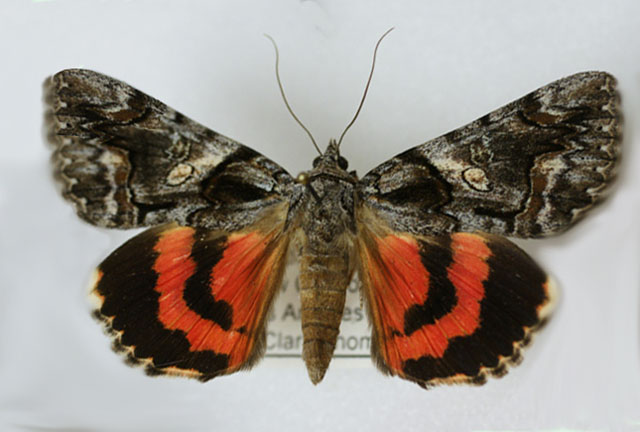
Catocala ophelia, Los Angeles County, California, courtesy of Clark Thompson.
This site has been created by
Bill Oehlke at oehlkew@islandtelecom.com
Comments, suggestions and/or additional information are welcomed by Bill.
| TAXONOMY:
Superfamily: Noctuoidea
Family: Noctuidae
Group: Noctuinina
Subfamily: Catocalinae
Genus: Catocala, Schrank, 1802
| |
MIDI MUSIC
"Moon River"
copyright C. Odenkirk
MIDI CITYON.OFF
<bgsound src="moon.mid" LOOP=FOREVER>
|
DISTRIBUTION:
Catocala ophelia (wingspan: 52mm)
flies in the dry forests of Arizona,
California and
southwestern Oregon.
Dr. Wayne Whaley reports, "C. ophelia
does come into Utah from the south where it is more common. I know
of 2 or 3 specimens taken in Salt Lake
Co. and Utah Co."
It has also been reported in
Colorado,
Nevada and
New Mexico.
The moth formerly described as Catocala dollii is a synonym of Catocala opehlia.
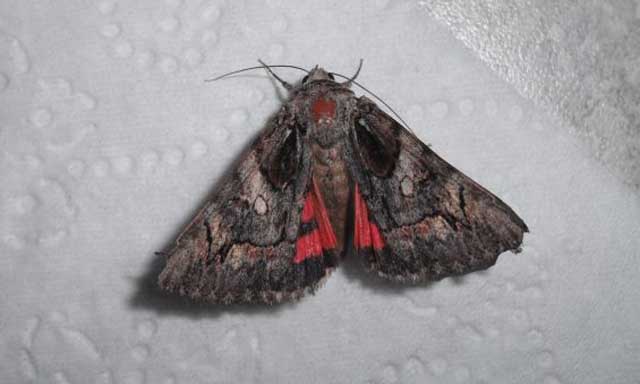
Catocala ophelia female, Wolf Creek, Josephine County, Oregon,
September 7, 2009, courtesy of Edna Woodward.
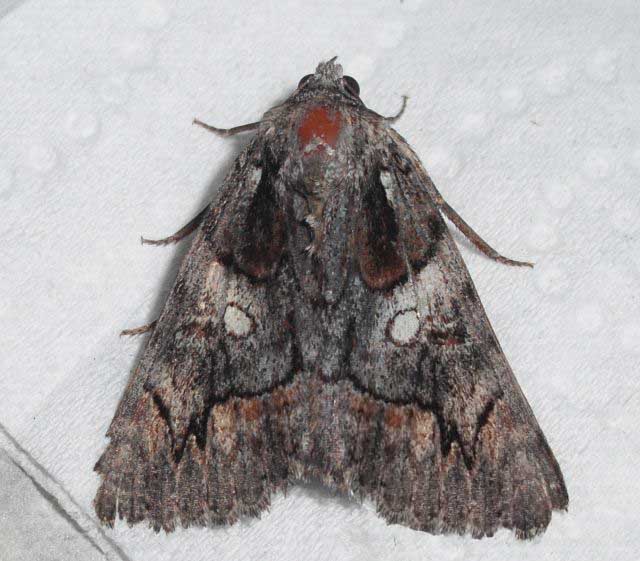
Catocala ophelia female, Wolf Creek, Josephine County, Oregon,
September 7, 2009, courtesy of Edna Woodward, some digital repairs by Bill Oehlke.
Edna Woodward writes, "I hate to trouble you, but can you identify this Catocala? It's not very big like some others. They are about the size of verrilliana just
about an inch or so, and it's tattered, but hopefully there will be enough to go on.
"But I have eggs! Lots of them. She's in a sack with a plum, and she eats and lays eggs. What a cinch!"
Edna has had great success rearing and photographing some of the local Sphingidae so I am very hopeful she will have success overwintering the eggs
and rearing and photographing the larvae and subsequent moths. I was not one hundred percent sure of the id when I first saw the images depicted above, but I am quite confident
after seeing the hidwings. I asked Edna to send me another photo after the female had expired.
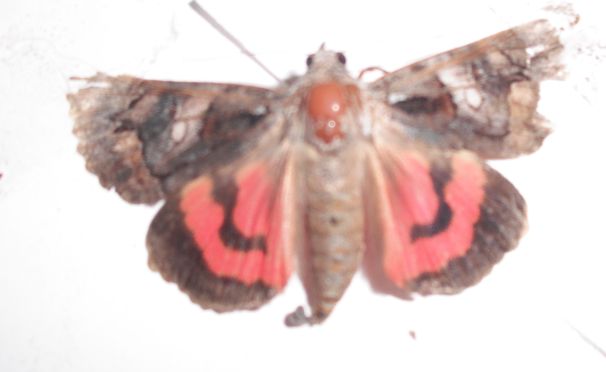
Catocala ophelia female, Wolf Creek, Josephine County, Oregon,
September 14, 2009, courtesy of Edna Woodward, some digital repairs by Bill Oehlke.
The forewing is dark grey and the antemedial and postmedial lines are relatively smooth except for the two jagged spikes in the postmedial
line near the apex. There is considerable brown shading outside the subterminal line.The hindwing is deep red with the black median band constricted in
the center and terminating before the inner margin. The black submarginal border is quite broad near the apex. The white fringe is
heavily checked. David Wikle image reworked by Bill Oehlke. | 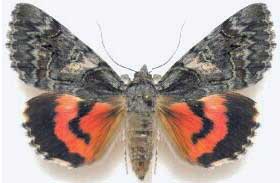 |
The subspecies dolli Beutenmüller, 1907, flies in the same region.
FLIGHT TIMES AND PREFERRED FOOD PLANTS:
Catocala ophelia are on the wing in late summer, from mid July into early October in California.
The Catocala ophelia caterpillar feeds on Quercus macrocarpa and Quercus chrysolepis.
Edna Woodward reports they accept California white oak and black oak, as well as the live oak in captivity in southwestern Oregon.
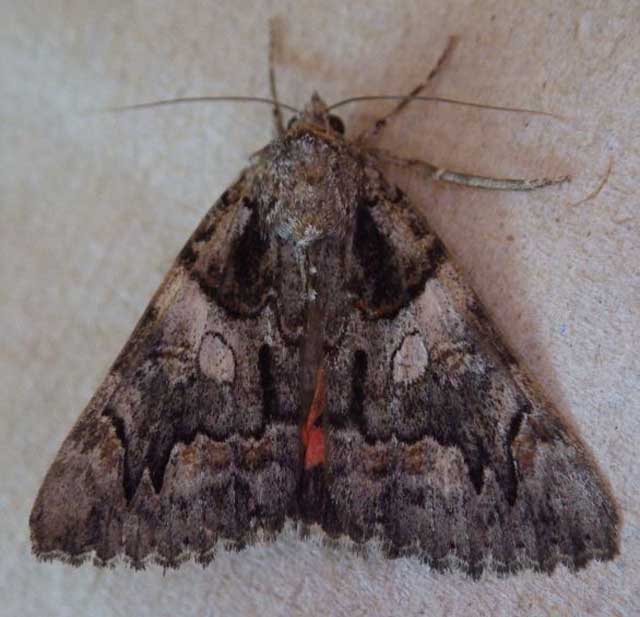
Catocala ophelia, Wolf Creek, Josephine County, Oregon,
September 12, 2013, courtesy of Edna Woodward.
ECLOSION:
Adults eclose from pupae at soil surface.
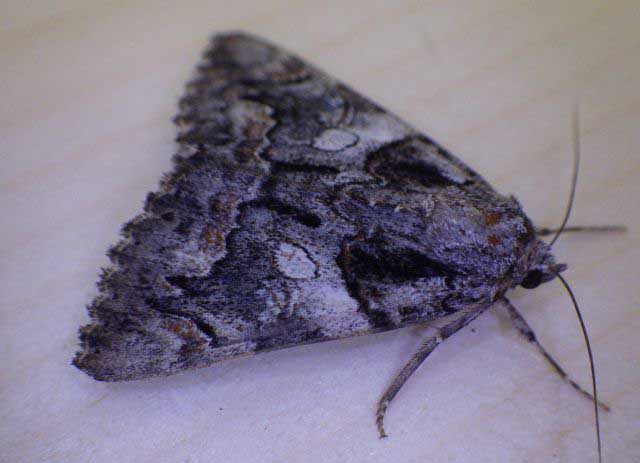
Catocala ophelia, Wolf Creek, Josephine County, Oregon,
September 12, 2013, courtesy of Edna Woodward.
SCENTING AND MATING:
Catocala ophelia females emit an airbourne pheromone and males use their antennae to track the scent plume.
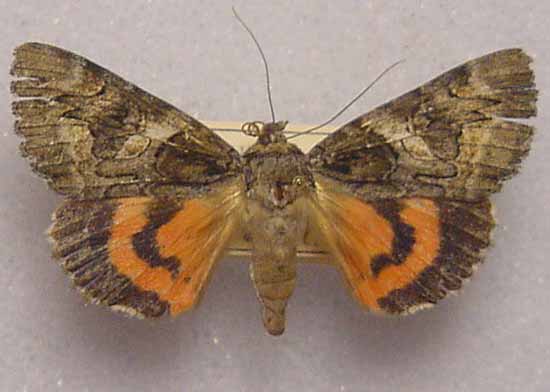
Catocala ophelia ophelia male, Hualapai Mtn Rd, Mohave County,
AZ.,
Aug 18 1991. collector, R.P. Meyer, courtesy of Kelly Richers.
EGGS, CATERPILLARS, COCOONS AND PUPAE:
Eggs are deposited on tree bark in the fall and hatch the following spring.
Edna Woodward successfully overwintered eggs deposited by a female in September.
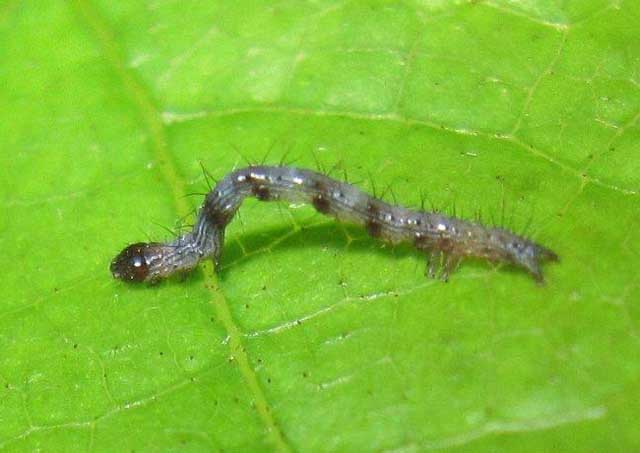
Catocala ophelia first instar, Wolf Creek, Josephine County, Oregon,
May 24, 2010, courtesy of Edna Woodward.
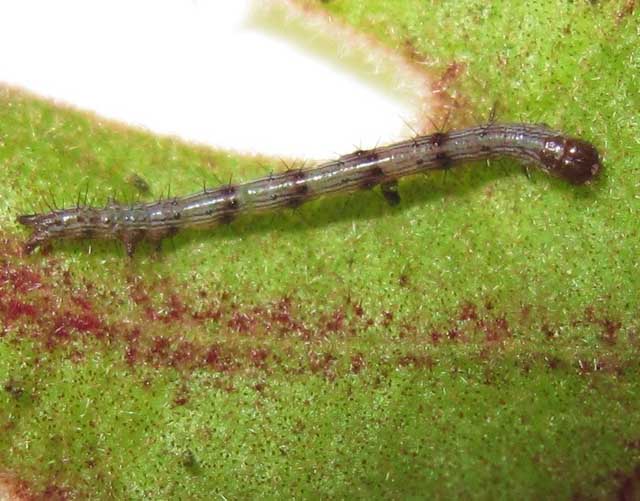
Catocala ophelia first or second instar, Wolf Creek, Josephine County, Oregon,
May 30, 2010, courtesy of Edna Woodward.
Larval Food Plants
Listed below are primary food plant(s) and alternate food plants. It is hoped that this alphabetical listing followed by the common
name of the foodplant will prove useful. The list is not exhaustive, although some species seem very host specific.
Experimenting with closely related foodplants is worthwhile.
Quercus lobata (EB)
Quercus kelloggii (EB)
Quercus macrocarpa
Quercus chrysolepis.......
|
California White oak
Black oak
Bur oak
Canyon live oak
|
This page is brought to you by Bill Oehlke and the
WLSS. Pages are on space rented from Bizland. If you would like to become a "Patron of the Sphingidae/Catocala Sites",
contact Bill.
Please send sightings/images to Bill. I will do my best to respond to requests for identification help.
Enjoy one of nature's wonderments: Live Saturniidae (Giant Silkmoth) cocoons.

|

To show appreciation for this site, click on the flashing
butterfly to the left, a link
to many worldwide insect sites. |











